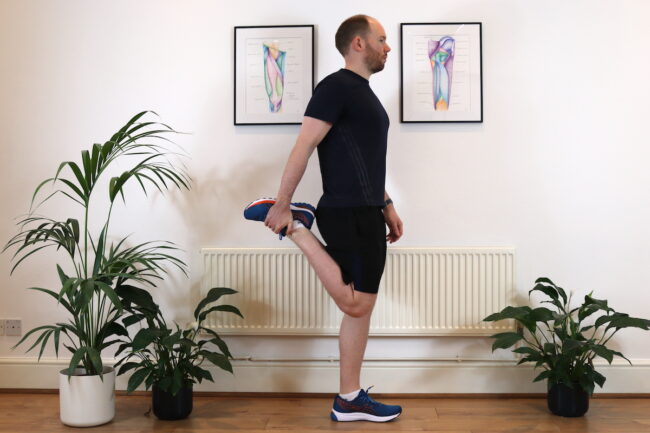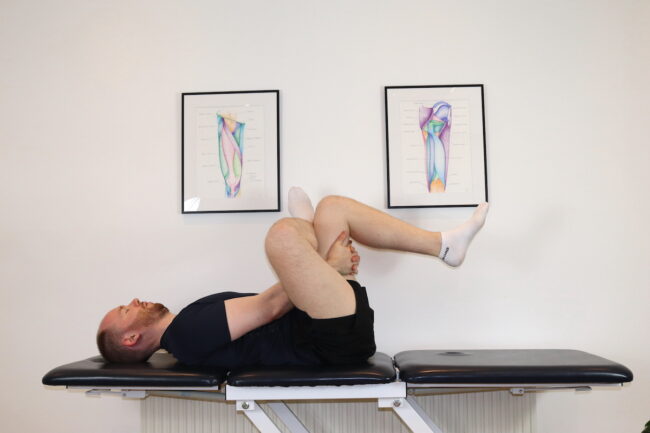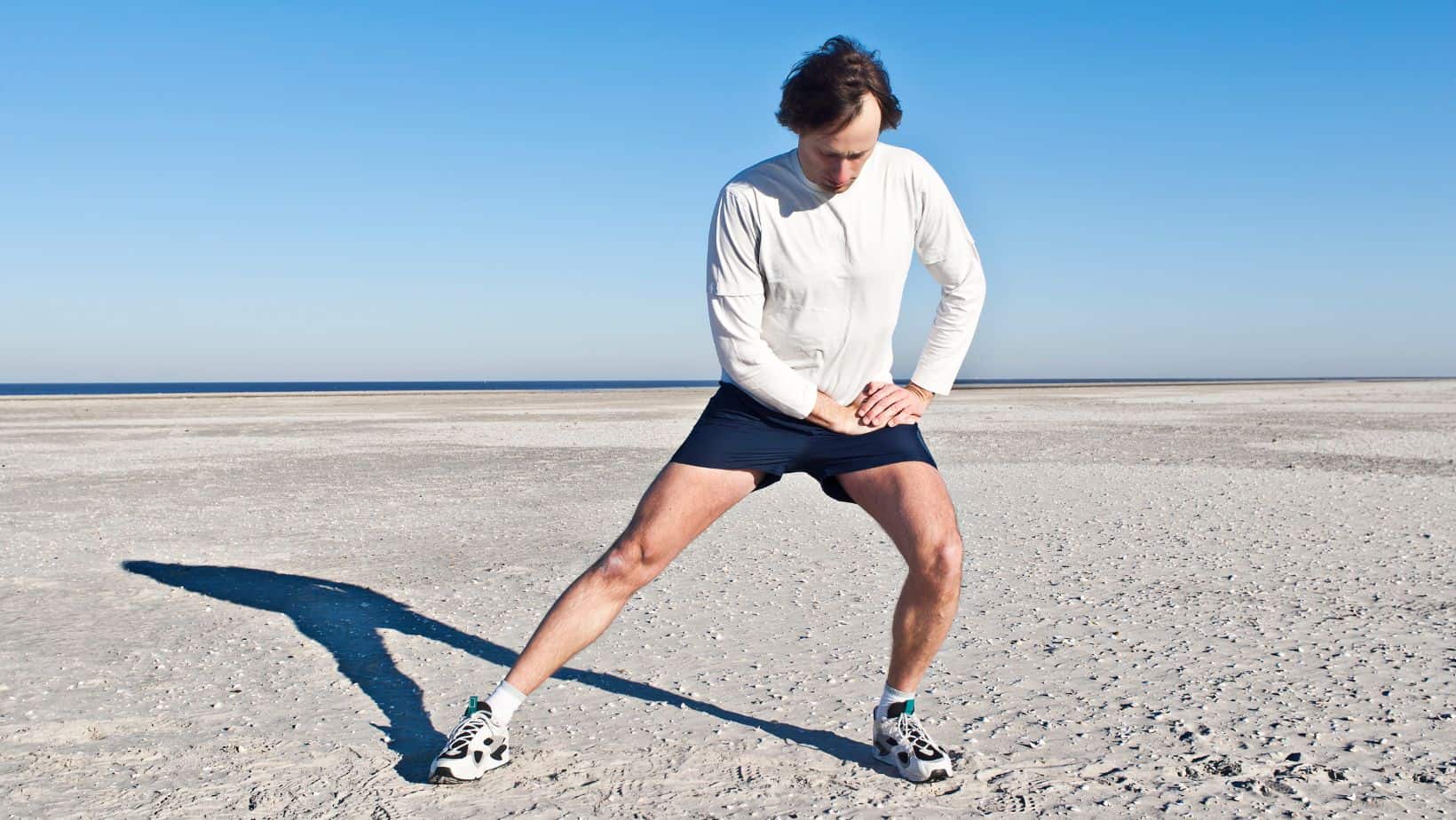Muscles of the Knee
Read More >
Are your knees feeling tight or stiff? Are you feeling less flexible? Or do you feel you should be doing some stretches after sport? Whatever the reason that brings you to this page, we want to describe to you the best knee stretches to improve your flexibility and comfort. The first three stretches that we describe are for the muscles that most commonly cause knee tightness or pain, the following two are also often useful for maintaining a happy comfortable knee as well as improving your general flexibility.
Read our related article, to learn more about the Muscles of the Knee and Knee Ligaments.
With the following stretches, you should ease into a stretched position slowly and hold. If you feel the stretch easing during the hold, you can tighten the stretch further. Hold for 45seconds, then relax. This can be repeated daily for general improvement in flexibility, or more frequently if it is to reduce pain, such as every 2 hours.
Do not continue holding a stretch if it is painful in the muscle or in the joint. See a medical professional such as a physical therapist to get an understanding and diagnosis as to why it is painful for you to perform the stretch.

This can be done standing or lying on your front. Take your ankle or top of your foot in hand and pull towards your hip. Make sure your knees stay parallel to that you get an effective stretch in all four of the individual quadriceps, as one of them attaches above the hip joint. You should feel the stretch at the front of your thigh, hip or knee. This must be pain-free as the muscle needs to relax.
Learn about injury to this muscle in our related article: Quadriceps Tear.
This can be done standing or sitting on the edge of a chair. Bow forwards with a straight back, keeping a straight knee and foot flat on the floor. Make sure you stay straight and don’t twist or rotate. You should feel the stretch at the back of your thigh or knee. This must be pain-free as the muscle needs to relax.
Learn about injuries of the hamstring such as Hamstring Tendonitis and Hamstring Tendonitis Exercises.


This can be done standing with the ball of your foot on the edge of a step. Hold on for support and lower one or both heels down, off the step. There are two muscles in the calf that can be stretched. The gastrocnemius is the most important for stretching the knee as it crosses the knee joint. To stretch this muscle, you must keep your knee straight. You should feel the stretch at the back of your calf or knee. This must be pain-free as the muscle needs to relax.
Learn about: Calf Muscle Pain and Ankle Mobility Exercises.
This can be done lying down or sitting on a chair. To stretch your right glute (as shown in the picture) take your left ankle and rest it on your thigh just above your left knee. Then take your left thigh in both hands, you can interlink your fingers and pull your left thigh towards your chest. If you are doing this in a chair you can lean your upper body forwards instead of pulling your thigh to your chest. There are three glute muscles and multiple other small, deep rotator muscles in this area, so you can pull or lean in slightly different directions to find the best stretch for you. You should feel the stretch at the back of your hip in your buttocks. This must be pain-free as the muscle needs to relax.
The glutes can often get tight after running and hiking, read more about: Stretches for Hikers and What Muscles Does Running Work.


This should be done standing with your feet wide apart. If you need help to keep your balance do this next to a wall or stable counter to hold onto. Bend your left knee and shift your weight onto your left leg, while keeping your right knee straight. Make sure that both feel are pointing roughly forwards. You should feel the stretch along the inside of your right thigh. This must be pain-free as the muscle needs to relax.
Learn about injuries to the adductors such as Pes Anserine Bursitis, treatment and exercises for it.
This is not medical advice. We recommend a consultation with a medical professional such as James McCormack. He offers Online Physiotherapy Appointments for £45.